A Guide to Lock Operations
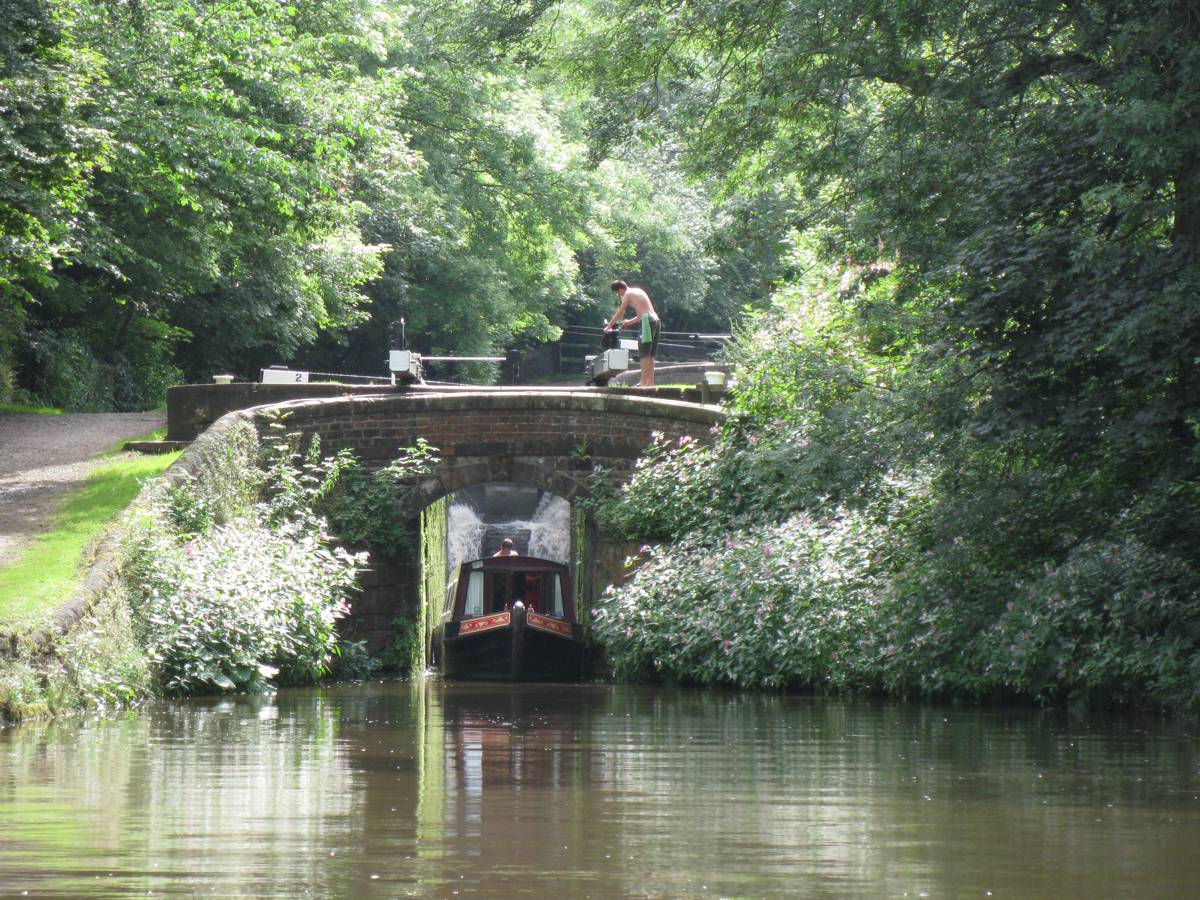
Locks are not difficult to operate, although they do require a degree of physical effort. You will soon become proficient with practice. If you are not sure what to do, ASK. Your fellow boaters will be pleased to help you. If necessary, moor up and watch other people working the lock.
Safety First
You need to be aware at all times of the safety of yourself, your crew, your boat, children, pets and bystanders.
Ensure that you and your crew are wearing suitable footwear. A windlass dropped onto bare toes can be extremely painful! Secure loose hair or clothing, scarves tucked in, avoid wearing cameras, shoulder bags etc. which can catch in the paddle mechanism. Do not allow small children to work locks.
CHILDREN AND NON SWIMMERS SHOULD ALWAYS WEAR LIFE JACKETS AROUND LOCKS. PETS MUST BE KEPT UNDER CONTROL
Why do we need locks ?
A lock is a device for altering the level of water in the canal, thus enabling boats to travel either up or down hills. They consist of the lock chamber, which is the brick or stone enclosure which holds the water, the gates (top and bottom) with their balance beams (which you push against to open and close the gates), the gates allow the boat to enter and leave the locks; the paddles, which are raised and lowered to control the water level; and the cill, which is a large raised ledge at the top end of the lock against which the top gate shuts. Locks work by water pressure and muscle power, there are no pumps or electric motors.
All the locks on the Llangollen and Montgomery canals, and on the Shropshire Union south of Nantwich, are “narrow” locks. This means that they are wide enough for one boat. North of Nantwich are “wide” locks. These hold two boats side by side.
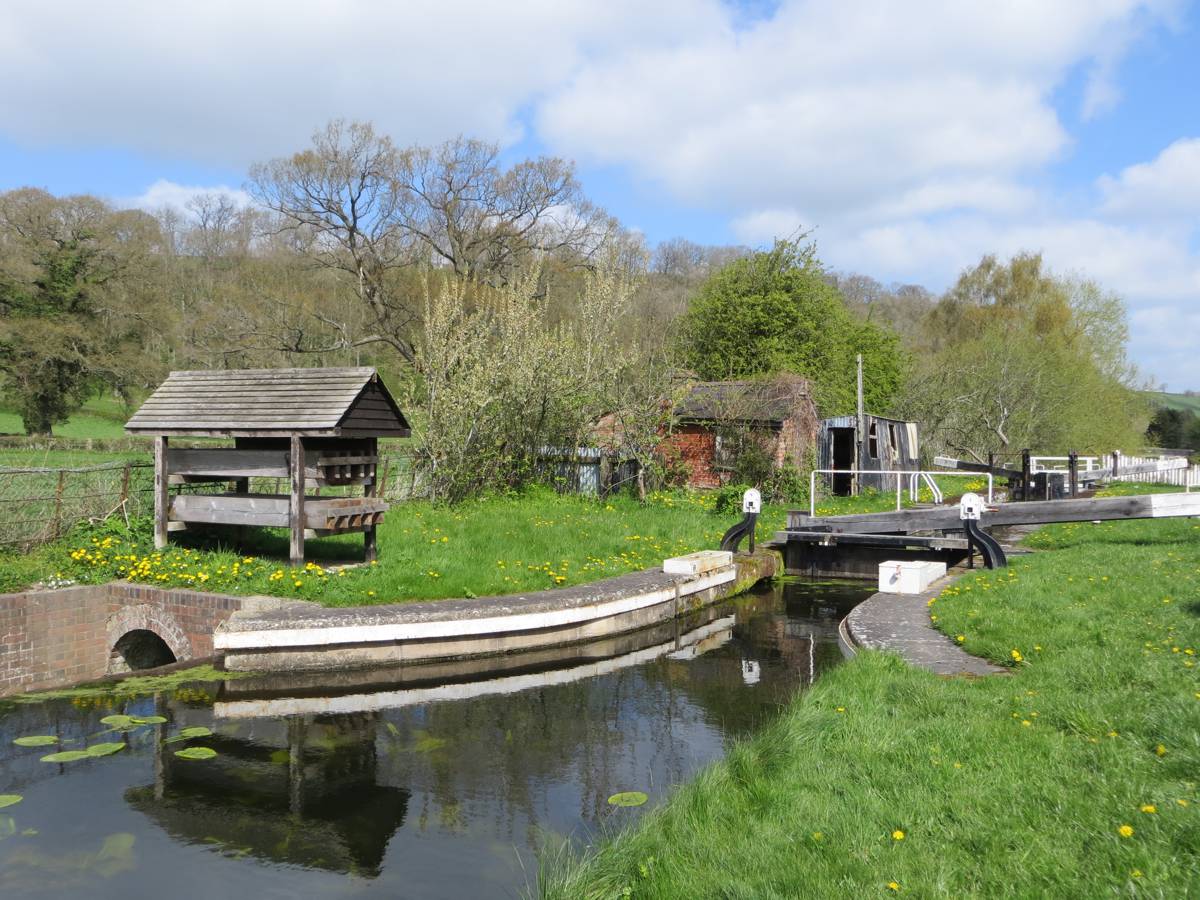
LOCK ETIQUETTE
If a British Waterways Lock-keeper is on duty, always follow his or her instructions. You will be expected to operate the locks yourself, but under supervision Some locks, eg those on the River Weaver, are always operated by Lock-keepers. Most locks, however, are self-operated.
If the water is in your favour, you have right of way; if the water is against you (eg the lock is full and you need it to be empty or vice versa) then a boat coming towards you has right of way, as they can make use of the water.
Do not use the lock moorings for overnight stays or to stop for a tea or meal break. You will be obstructing other users.
If a boat is coming towards you as you exit the lock, leave the gates open for them
Locks are a great place to meet other boaters, to exchange news and gossip, and to learn tips and hints from more experienced crews. If you are waiting in a queue, go forward with your windlasses and offer to help the boats in front of you. Not only will this speed things up, you will have the opportunity to chat, meet new people, and possibly learn more about the canals.
Now its your turn..! read on…
Remember, if you do offer to help, always follow the instructions of the crew whose boat is in the lock.
GOING UP!
When you arrive at the lock, moor up and send your crew, with their windlasses, forward to the lock. If another boat is already using the lock, your crew can help them through, but always ask first!
If the lock is empty of boats and water, open the gates by pushing against the balance beams. If the lock is full, or partly full, use the windlass to wind up the paddles on the gates nearest to your boat. The water will empty from the lock. When the lock is empty, open the gates and WIND THE PADDLES DOWN.
Steer the boat into the lock, the crew shuts the gates behind you. The crew then goes to the far end of the lock and SLOWLY opens the top (ground) paddles. These are situated either side of the lock.
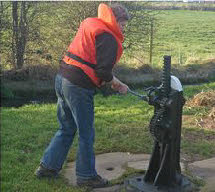
Winding up the ground paddles to fill the lock. Always wind slowly to avoid making a tidal wave in the lock which will throw the boat backwards against the bottom gates.
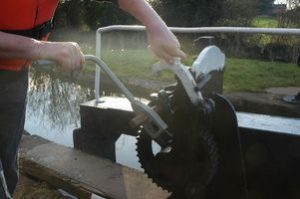
Holding up the safety catch whilst winding down the paddle.
Keep a tight hold on the windlass. It could spin round, or it will fly off and hit you if you let go.
Control the movement of the boat with gentle bursts of throttle, forward if the boat is moving backwards, reverse if the boat is moving forwards. Your crew must understand the importance of opening the paddles slowly, to prevent the boat washing about in the lock. If you are the only boat in a wide lock, pass the boat’s centre line round a lockside bollard and hold the end. This will help to keep the boat against the wall.
When the lock is full, open the top gate and steer the boat out of the lock. Meanwhile, the crew shuts the top paddles. They then shut the gate behind the boat while you moor up for them to get back on board. If another boat is coming towards you, your crew should leave the gate open for them.
NEVER TIE YOUR BOAT IN A LOCK, IT CAN HANG UP OR TURN OVER
GOING DOWN!
When you arrive at the lock, moor up and send your crew, with their windlasses, forward to the lock. If another boat is already using the lock, your crew can help them through, but always ask first!
If the lock is full, the crew opens the gate and you can steer the boat in. If the lock is empty or partly full, the crew fills the lock by winding up the paddles nearest to your boat. When the lock is full, the crew opens the gate and WINDS DOWN the paddles.
Steer the boat into the lock, and the crew shuts the gate behind you. Position the boat well forward of the white CILL MARKERS, which are painted on the locksides just inside the top gate. Avoid hooking your front fender through the mitre (bottom) gates.
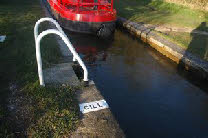
The crew empties the lock by winding up the paddles at the far end of the lock (ie nearest the front of the boat). As the lock empties, continue to look behind you to check that the back of the boat is clear of the cill markers. Use gentle bursts of throttle to keep the boat steady. DO NOT TIE YOUR BOAT IN THE LOCK.
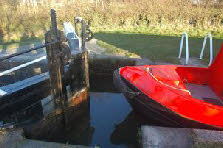
When the lock is empty, the crew opens the gates and winds down the paddles. Steer the boat out of the lock; the crew shuts the gates behind you and reboards the boat. If another boat is coming towards you, the crew can leave the gates open for them.
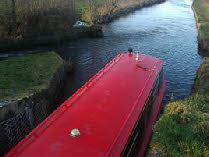
Remember to shut all gates and paddles when leaving a lock
REMEMBER: BEWARE OF THE CILL WHEN GOING DOWNHILL!
Going up hazards….
If your crew shuts the mitre gates on the rear fender or the rudder, the boat will not rise in the lock and will be flooded. SHUT THE PADDLES IMMEDIATELY, then gently let the water out of the lock.
Do not work through locks with your side fenders hanging down – some locks are VERY narrow, and the boat will wedge in the lock. If you get stuck, SHUT THE PADDLES IMMEDIATELY and try to work the fenders free.
Going down hazards….
If you catch the back of the boat on the cill as the level drops SHUT THE PADDLES IMMEDIATELY, then slowly refill the lock to right the boat. Failure to act quickly may result in the boat sinking in the lock. Check the boat for damage to the rudder and propeller.
If you get the front fender caught in the mitre (bottom) gates, SHUT THE PADDLES IMMEDIATELY. Refill the lock slowly, and free the boat. Failure to act quickly can result in the back of the boat going under water as the level drops, and the boat may sink in the lock.
